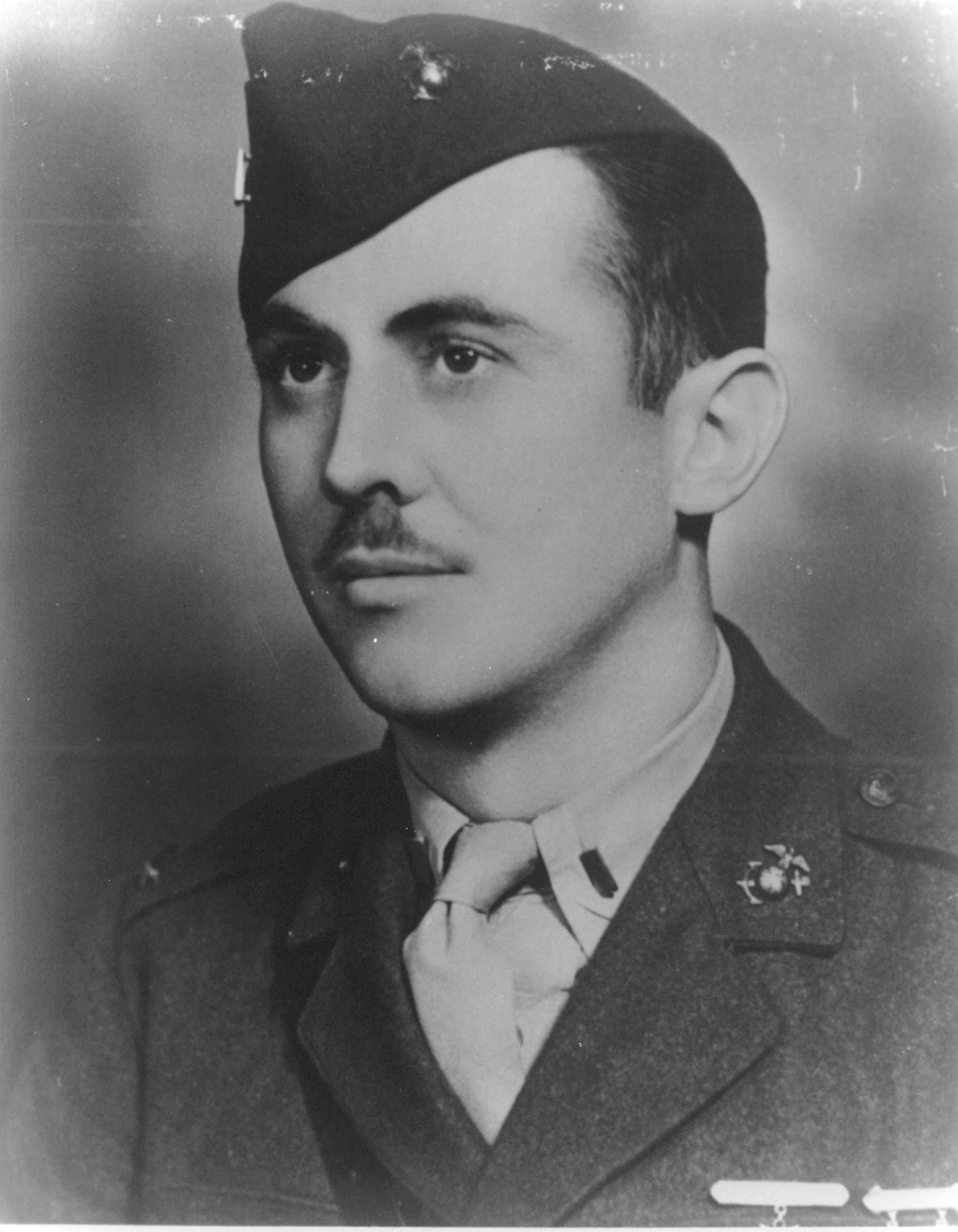
FIRST LIEUTENANT
WILLIAM DEANE HAWKINS, USMCR (DECEASED)
Medal of Honor Citation
William Deane Hawkins was born 18 April 1914 in Fort Scott, Kansas. When he was a baby, he suffered an accident which scarred him for life. A neighbor upset a can of scalding hot water over him and it was a year before his mother was able to cure the muscular damage by massage and he could walk again.
When he was five, the family moved to El Paso, Texas; when he was eight, his father died and his mother had to seek outside employment. She was employed as the secretary to a high school principal and, later, as a teacher in the El Paso Technical Institute.
An excellent student, he skipped fifth grade at LaMar and Alta Vista Schools and graduated from El Paso High School when he was 16. He won a scholarship to the Texas College of Mines, where he studied engineering. During summer vacations, he delivered magazines and sold newspapers, and worked as a bellhop, ranch hand, and railroad laborer.
When he was 21, he went to Tacoma, Washington, to work. At 23, he was an engineer for a Los Angeles title-insurance company.
After Pearl Harbor was attacked, he enlisted in the Marine Corps Reserve, 5 January 1942, and was assigned to the 7th Recruit Battalion, Recruit Depot, San Diego. He had tried unsuccessfully to enter both the Army and the Navy Air Corps, but his scars prevented his being accepted. Now, as a Marine, he joined the 2d Marines, 2d Marine Division, completed Scout Snipers' School at Camp Elliott, San Diego, and on 1 July 1942 embarked on board the USS Crescent City for the Pacific area.
A private first class when he went overseas, he was quickly promoted to corporal and then sergeant. On 17 November 1942, he was commissioned a second lieutenant while taking part in the Guadalcanal campaign in the battle for the Solomons. On 1 June 1943, he was promoted to first lieutenant. Less than six months later, he was killed in action leading a scout-sniper platoon in the attack on Betio Island during the assault on Tarawa.
During the two-day assault, 1stLt Hawkins led attacks on pill boxes and installations, personally initiated an assault on a hostile position fortified by five enemy machine guns, refused to withdraw after being seriously wounded and destroyed three more pill boxes before he was mortally wounded, 21 November 1943. For his actions above and beyond the call of duty, 1stLt Hawkins was posthumously awarded the Medal of Honor.
Robert Sherrod, then Editor of The Saturday Evening Post, wrote the following about the Marine platoon leader:
"Hawkins had told me aboard the ship that he would put his platoon of men up against any company of soldiers on earth and guarantee to win. He was slightly wounded by shrapnel as he came ashore in the first wave, but the furthest thing from his mind was to be evacuated. He led his platoon into the forest of coconut palms. During a day and a half he personally cleaned out six Jap machine gun nests, sometimes standing on top of a track and firing point blank at four or five men who fired back at him from behind blockhouses. Lieutenant Hawkins was wounded a second time, but he still refused to retire. To say that his conduct was worthy of the highest traditions of the Marine Corps is like saying the Empire State Building is moderately high."
His remains were eventually interred in the National Memorial Cemetery of the Pacific in Honolulu, Hawaii.
In recognition of his leadership and daring action against enemy positions, the air strip on Betio Island was named Hawkins Field in honor of the Marine hero. With his unit 1stLt Hawkins also shared in the two Presidential Unit Citations awarded the 1st Marine Division (Reinforced) for heroic action during the Guadalcanal and Tarawa campaigns.
World War II 1941-1945 Medal of Honor